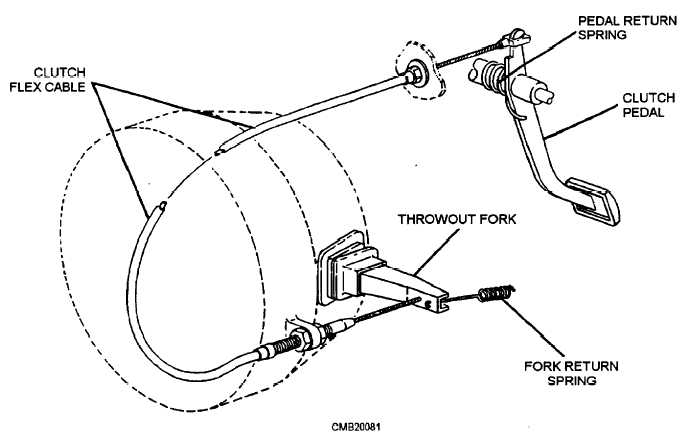The operating principles, component functions, and maintenance requirements are essentially the same for each of the three clutches mentioned. This being the case, the single-disc clutch will be used to acquaint you with the fundamentals of the clutch.
CLUTCH CONSTRUCTION
The clutch is the first drive train component powered by the engine crankshaft. The clutch lets the driver control power flow between the engine and the transmission or transaxle. Before understanding the operation of a clutch, you must first become familiar with the parts and their function. This information is very useful when learning to diagnose and repair the clutch assembly.
Clutch Release Mechanism
A clutch release mechanism allows the operator to operate the clutch. Generally, it consists of the clutch pedal assembly, either mechanical linkage, cable, or hydraulic circuit, and the clutch fork. Some manu- facturers include the release bearing as part of the clutch release mechanism.
A clutch linkage mechanism uses levers and rods to transfer motion from the clutch pedal to the clutch fork. One configuration is shown in figure 4-3. When the pedal is pressed, a pushrod shoves on the bell crank and the bell crank reverses the forward movement of the clutch pedal. The other end of the bell crank is connected to the release rod. The release rod transfers bell crank movement to the clutch fork. It also provides a method of adjustment for the clutch.
The clutch cable mechanism uses a steel cable inside a flexible housing to transfer pedal movement to the clutch fork. As shown in figure 4-4, the cable is usually fastened to the upper end of the clutch pedal, with the other end of the cable connecting to the clutch fork. The cable housing is mounted in a stationary position. This allows the cable to slide inside the housing whenever the clutch pedal is moved. One end of the clutch cable housing has a threaded sleeve for clutch adjustment.

Figure 4-4. - Clutch cable mechanism.
Continue Reading